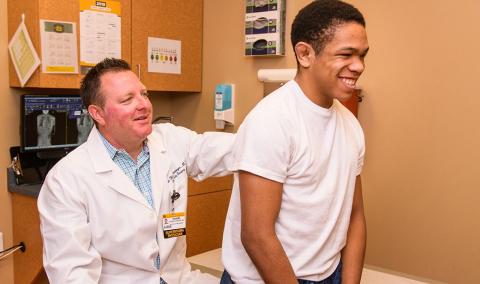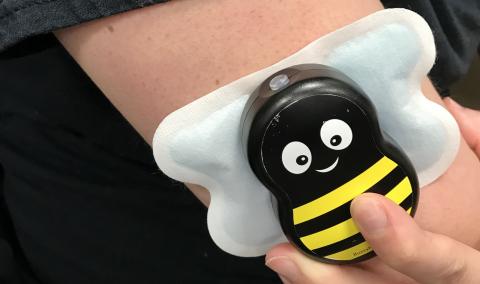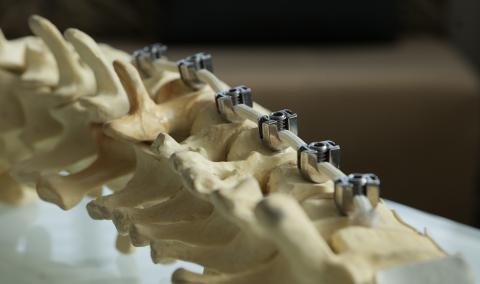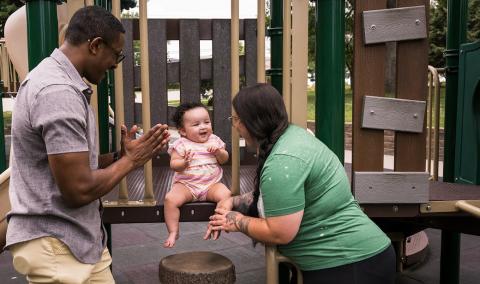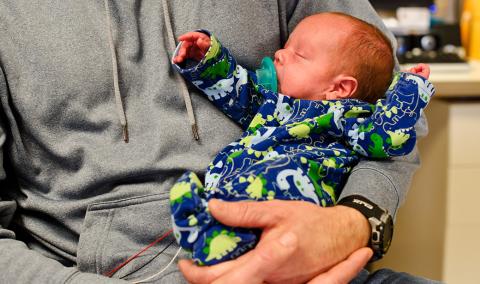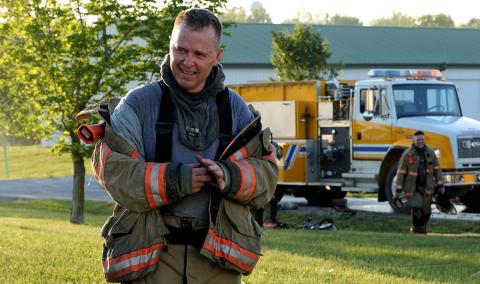Ellis van Creveld syndrome (EVC) is a rare form of skeletal dysplasia that effects approximately 1 in 150,000 people, though it is more common in certain ethnic and racial groups, such as the American Amish. Treatment of symptoms may include monitoring and surgery by doctors who specialize in skeletal dysplasia.
If you have a child with EVC, you want him or her to receive comprehensive care from a team of experts. At University of Missouri Health Care, we are the region's experts in treating skeletal dysplasia diseases. We are actively involved with national research for treatments, and the leader of our team, Daniel Hoernschemeyer, MD, sits on the medical advisory board of the Little People of America so he can be actively involved with the issues affecting the health of skeletal dysplasia patients.
Ellis van Creveld syndrome CHARACTERISTICS
People with EVC can expect to reach a height of 3-foot-7 to 5-3. Common features include extra fingers and toes, knock-knees, teeth irregularities and heart defects.
Ellis van Creveld syndrome DIAGNOSIS AND TREATMENT
A diagnosis of Ellis van Creveld syndrome can be made using clinical assessments, radiological imaging and genetic testing. Surgery is required to remove extra fingers and toes for patients who have polydactylism. Knock-knees often progresses as the child gets older and should be monitored with a series of X-rays called an extremity alignment series. Surgery is necessary if the patient has significant pain walking. More than half of EVC patients have heart defects at birth and should be followed by a cardiologist. A pediatric dentist can help manage teeth concerns, which can include week, missing or poorly formed teeth.
RESOURCES FOR FAMILIES
Click here for more detailed information and resources on Ellis van Creveld syndrome.
Related Conditions & Treatments
- Adolescent Medicine
- Chest Wall Deformities
- Down Syndrome
- Emergency Care for Kids
- Gastrostomy and Feeding Access Program
- Hyperbaric Oxygen Therapy
- Juvenile Diabetes
- Neonatology
- Pediatric Anesthesiology
- Pediatric Cancer
- Pectus Carinatum
- Pectus Excavatum
- Pediatric Cardiology
- Pediatric Dermatology
- Pediatric Development and Behavior
- Pediatric ENT (Ear, Nose and Throat)
- Pediatric Epilepsy
- Pediatric Eye Care
- Pediatric Gastroenterology
- Pediatric Infectious Diseases
- Pediatric Inpatient Rehabilitation
- Pediatric Nephrology
- Pediatric Neurology
- Pediatric Neurosurgery
- Pediatric Orthopaedics
- Pediatric Plastic Surgery
- Pediatric Primary Care
- Pediatric Psychiatry
- Pediatric Pulmonary Medicine
- Pediatric Sleep Medicine
- Pediatric Surgery
- Pediatric Surgical Services
- Pediatric Urology
- Pediatric Vascular Anomalies
- Pediatric Weight Management
- Sickle Cell Disease
- Aerodigestive Program







